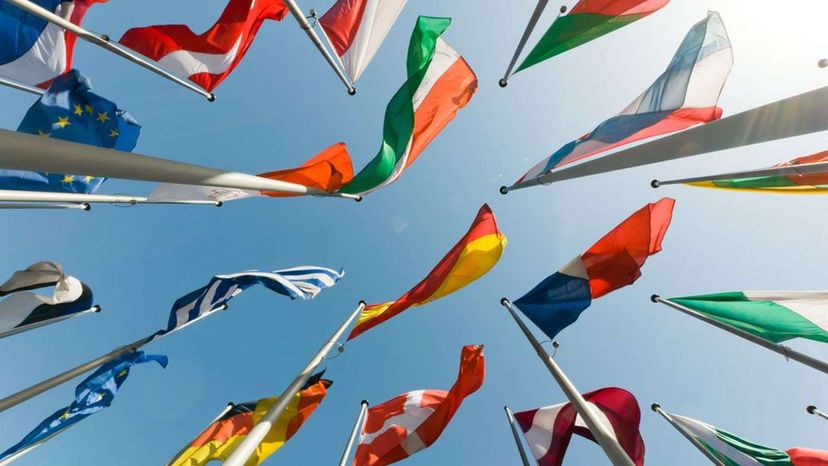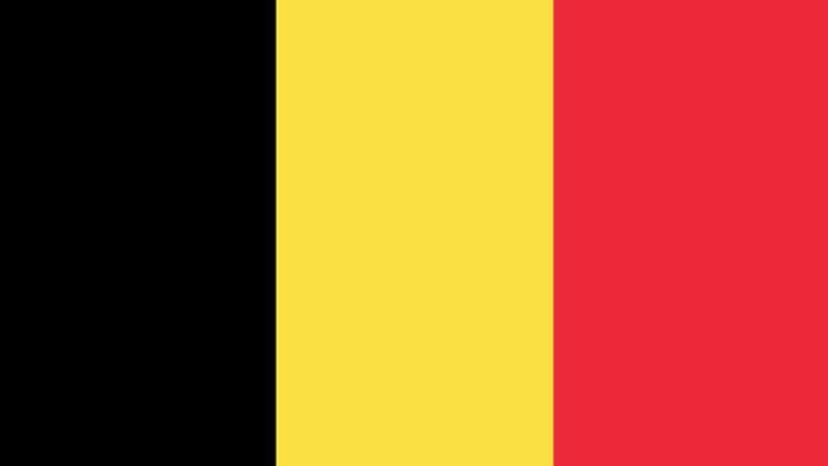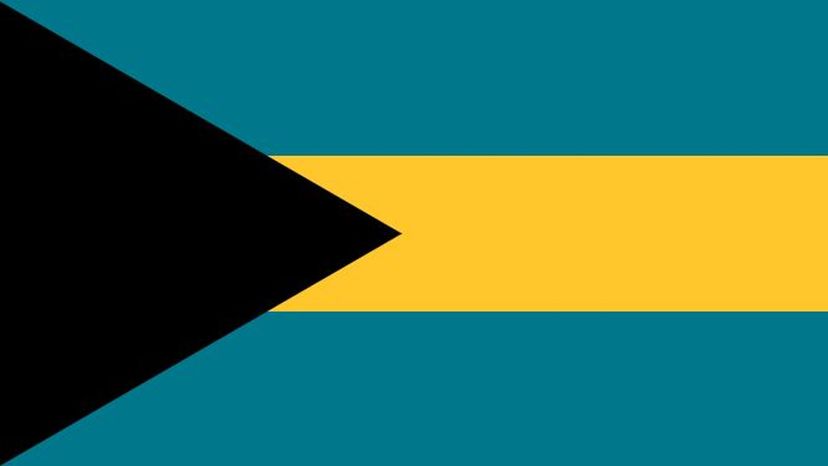
About This Quiz
"Whose broad stripes and bright stars..." If you're from the United States of America, there's a likely chance that you've sung these lyrics hundreds of times. Written by Francis Scott Key and talking about the flag of the United States, hopefully you could recognize the flag from an image. What about the other countries throughout the world?
Let's have a quick geography lesson, shall we? There are 7 continents of the world, six of which are habitable. These 6 continents are made up of 197 different countries with their own flags. Could you recognize them?
When it comes to a country's flag, it usually gives you a glimpse of the history. The United States flag has 13 "broad stripes." These stripes represent the first 13 colonies. There are 50 white stars placed along the blue background. They are etched into every flag for the 50 states that make up the united states. How many other countries can you recognize?
While you're probably used to the red and white look of the Canadian flag, you might not have known that the red is symbolic of England while the white represents France.
All countries have their own flag that tells a story of their history. With all the 197 countries in the world, we're only asking that you remember 48 of them! Can you match all these countries to their flags?
Will your score leave you flying high? Let's find out!

The American flag goes by several other names, including The Stars and Stripes; Red, White and Blue; Old Glory and The Star-Spangled Banner. It has 50 stars (one for each state) and 13 stripes (one for each of the original 13 colonies).

The flag of the United Kingdom is commonly referred to as the Union Jack. It remains a part of the flags of many past British colonies, including Australia, New Zealand and the Cayman Islands

Australia is known as the island continent. It is about three and a half times bigger than Greenland, which is often ranked as the largest island. The flag of Australia pays tribute to the fact that it was once a British colony.
Advertisement

The Crescent and Star of Pakistan's flag are meant to represent the country's large Muslin population and the diverse minority religions that exist there. The crescent represents progress; the star is meant to signify light.

Finland's flag, like the flags of the other Nordic countries, bears what is called a Nordic (or Sacndinavian) cross. The blue of the Finnish flag represents both the sky and the country's many lakes, while the white signifies the winter snow.

After World War II, when Germany split into West Germany and East Germany, the flags of both countries were identical to the current German flag, except that the flag for East Germany contained a diagram of the national emblem in its center.
Advertisement

The official name of the Japanese flag means "Sun-mark flag†although it is most often referred to as the "Circle of the Sun.†Japan is known as the "Land of the Rising Sun†and the characters in its name translate to "Sun origin.â€

New Zealand's flag features four stars which represent the constellation Crux (also called the Southern Cross). Representations of Crux also appear on the flags of Australia, Brazil, Samoa and Papua New Guinea.

The flag of Saudi Arabia bears the Islamic creed, or shahada written in Arabic. The sword points in the direction in which the script is read. The flag is made so that it reads correctly regardless from which side it is viewed.
Advertisement

The Brazilian flag contains 27 stars, each of which is meant to represent one of the Brazilian states. The stars are actually constellations in the sky over Rio de Janeiro as they appeared on November 15, 1889 - the day the flag was officially adopted as the national flag.

The Spanish flag is rectangular with a depiction of the country's coat of arms placed closer to one side. In the event that the flag is made more in the shape of a square, the coat of arms is placed in its center.

The flag of Belgium can give you a pretty good idea of whether or not the king is in the country. That is because palaces tend not to fly the flag when he is outside of the country.
Advertisement

The blue and red circle in the middle of the South Korean flag is familiar to many people around the world as a yin-yang symbol. The two halves together (red for positive cosmic energy and blue for negative cosmic energy) represent balance in the universe.

Argentina's triband flag contains a Sun of May in the middle (white) band, which may be a representation of the Inca Sun god, Inti. The Sun of May is also found on the flag of Uruguay.

The new Myanmar flag was adopted in 2010 and contains colors (yellow, green and red) similar to those used on other flags in the country's history. There has been debate, however, that those colors are distinctly Pan-African and that the flag might be mistaken as one belonging to an African country.
Advertisement

Poland's flag of white over red is similar to the flags of both Monaco and Indonesia. The flags of those two countries are practically identical with red over white. Malta's flag also has two bands of red and white, but they are vertical.

Although there are several tricolor national flags, the French flag is commonly referred to as the "Tricolor.†The flag was closely associated with the French Revolution and its colors have come to symbolize liberty, equality, and fraternity. For this reason, these colors are used on many other flags.

The flag of Turkey is one of several national flags with a depiction of a crescent and star. Other countries with these symbols in their flags include Pakistan, Algeria, Libya and Azerbaijan.
Advertisement

The Israeli flag contains the Star of David (represented by the blue hexagram) in its center. The star has been an important symbol of the Jewish religion since medieval times.

When the Cuban flag was first designed in 1849, the country was divided into three regions: Central, Eastern and Western. The three blue stripes on the flag were meant to represent these areas.

The flag of China is often called the "Five-star red flag†due to its design. The autonomous regions of Hong Kong and Macao have their own flags. Hong Kong's flag features the flower of the orchid tree, while Macao's flag has a lotus flower.
Advertisement

The flag of Italy is very similar to the Mexican flag - both are green, white and red tricolors. The red and green are lighter on the Italian flag, however, and it bears no diagram as the Mexican flag does.

The red and white in Madagascar's flag come from the colors of the flag of the Kingdom of Madagascar (the name of the country before it was colonized by France in 1986). The green represents Madagascar's Hova people who make up the vast majority of commoners in the country.

The design of Nigeria's flag came as the result as of a 1959 national competition. Michael Taiwo Akinkunmi, whose design won, is famously known as "The Flag Man†in his country. His original design, however, contained a red radiating Sun in the center which was removed before the final flag was adopted.
Advertisement

The current Venezuelan flag is based on one designed by South American revolutionary Francisco de Miranda. The flags of both Colombia and Ecuador also retain the yellow, blue and red bands as a tribute to him.

This is the flag that was used by Czechoslovakia before it split into the Czech Republic and Slovakia. Slovakia adopted a new flag and the Czech Republic chose to keep the original flag.

Jamaica's flag holds the distinction of being the only national flag without the colors red, white or blue. The basic concept of the flag's design came out of a national competition which solicited ideas from the public.
Advertisement

The vertical tricolor that makes up Mexico's flag has a diagram of the country's coat of arms in the center. The flag's design, which has remained mostly unchanged, was created in 1821 when Mexico gained independence from Spain.

The current flag of the Netherlands looks very much like the flag of Luxembourg. The primary difference lies in the fact that the blue on the Netherlands flag is darker while the blue on the Luxembourg flag looks more like sky blue.

The Austrian flag is referred to as a triband since it is composed of three different bands. This is opposed to a tricolor flag, which is a type of triband with three bands but each band has a different color.
Advertisement

Singapore's current flag was adopted in 1959 when the country achieved self-government from the British. It was retained as the national flag when Singapore gained full independence in 1963. The five stars represent democracy, peace, progress, justice and equality.

The color at the top of the Indian flag is officially called India saffron and is described as a golden yellow. The color at the bottom of the flag is officially known as India green.

The symbol in the center of the Kenyan flag is of a Maasai shield and two spears. The Maasai are a nomadic people who live within the bordering regions of Kenya and neighboring Tanzania.
Advertisement

The Vatican City flag (or flag of the Holy See) is square. Switzerland is the only other country in the world that also has a square flag. The crossed keys on the Vatican City flag are known as the keys of Saint Peter which represent the Keys of Heaven.

The red, black and white on the flag of Trinidad and Tobago represent the Sun, Earth and water, respectively. When the country was a British colony, its flag contained the Union Jack.

Like the other Nordic countries, Norway's flag bears the Nordic (or Scandinavian Cross). The cross is meant to represent Christianity.
Advertisement

The current flag was used as Russia's national flag from 1696 to 1971 when the flag of the Soviet Union was adopted. It was reinstated in 1991 when the Soviet Union was dissolved.

Also called Ivory Coast, Cote d'Ivoire was once a French Colony. Its orange, white and green vertical tricolor flag is reminiscent of the French flag.

The two ultramarine bands on either side of the flag of Barbados represent the seas surrounding the island. The center yellow symbolizes the sand. The broken trident within the yellow band is meant to symbolize the country's break from colonial rule by the British.
Advertisement

The green five-point star (pentangle) on Morocco's flag represents the seal of Solomon. The red pays tribute to the country's royal heritage.

The Bahamas gained independence from the United Kingdom in 1973, at which time the country adopted its current flag. The previous flag contained the British Union Jack and an Emblem of the Bahamas as a colony.

Following the Great Canadian Flag Debate of 1963 -1964, the current Maple Leaf flag was adopted as the country's national flag. Several of the options which had been put forward also contained the colors red and white, as well as a depiction of the maple leaf.
Advertisement

The Costa Rican flag has changed only slightly since it was created in 1848. The flag closely resembles that of Thailand in which the red and blue bars are reversed.

The red in the Vietnamese flag is said to be reminiscent of the country's connections with communism. The five-point star in the center of the flag represents Vietnam's main social classes - farmers, workers, businessmen, intellectuals and military personnel.

Fiji is a former British colony and so like several other such countries, its flag retains a depiction of the British Union Jack. As for the other parts of the flag, the light blue background symbolizes the Pacific Ocean and the shield is a representation of the country's coat of arms.
Advertisement

On the flag of Bahrain, the five white triangles symbolize the Five Pillars of Islam. The flag is quite similar to the flag of Qatar and as such, the two are frequently confused with one another. The Qatar flag, however, has a deeper red and nine white triangles.

The white equilateral triangle on the flag of the Philippines symbolizes liberty, equality and fraternity. The stars and the rays of the sun represent the country's three major islands and eight provinces, respectively.

The black, yellow and red on Uganda's flag signify its people, the sunshine and brotherhood, respectively. The bird in the center of the flag is the grey crowned crane, Uganda's national bird.
Advertisement